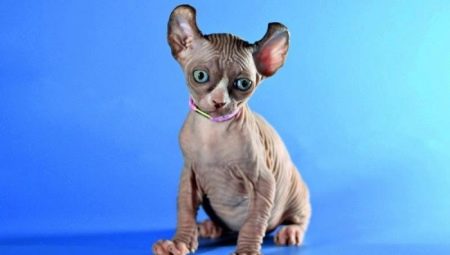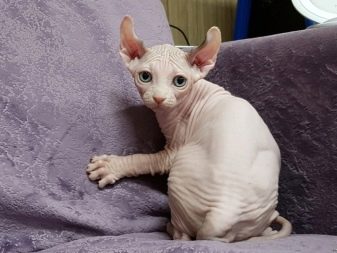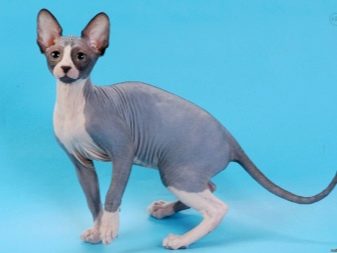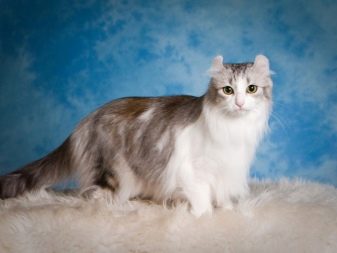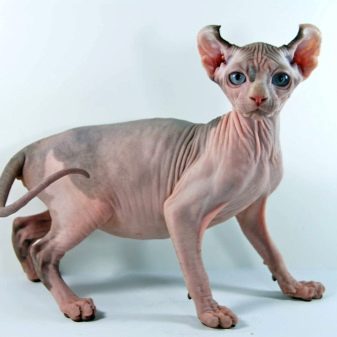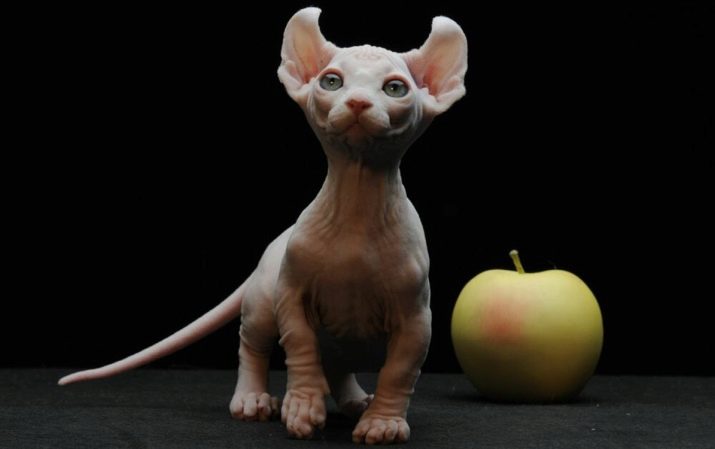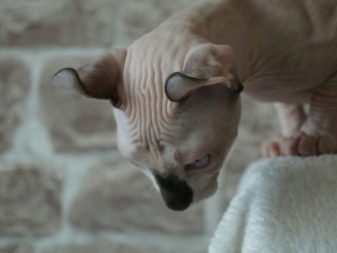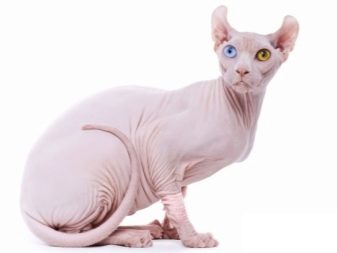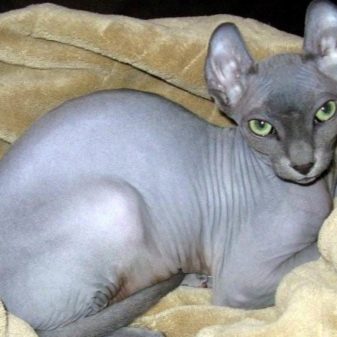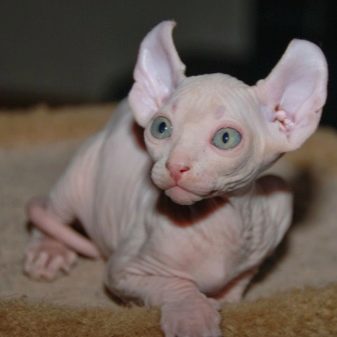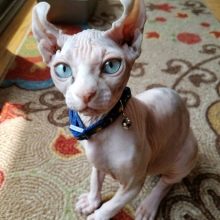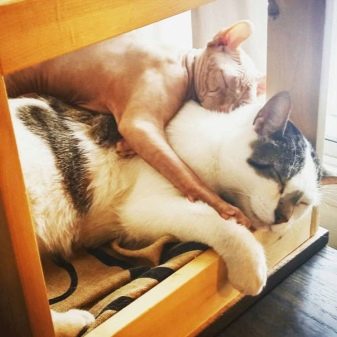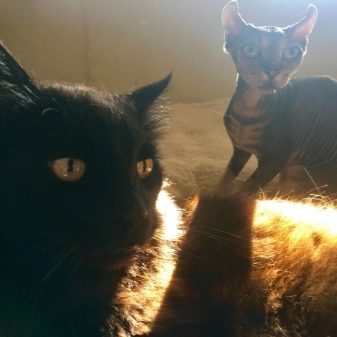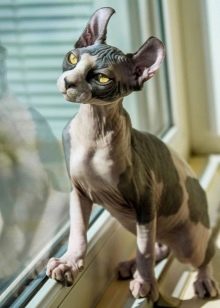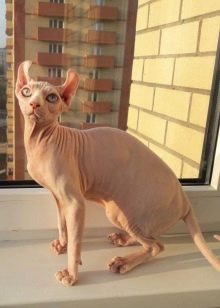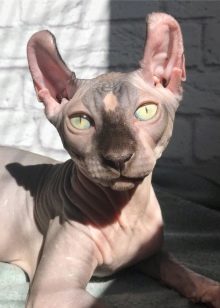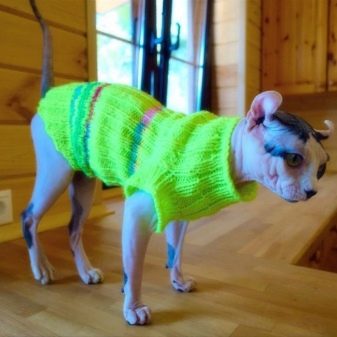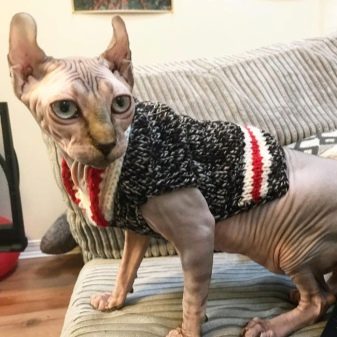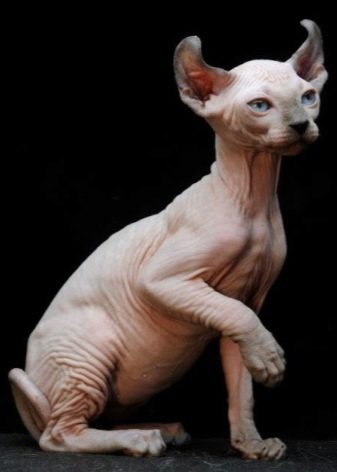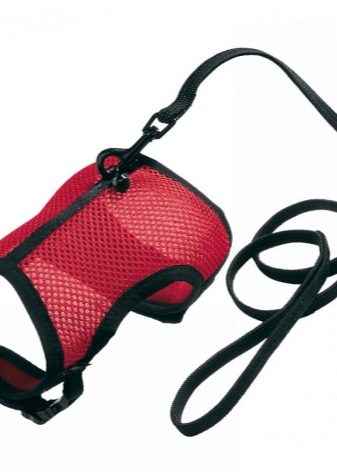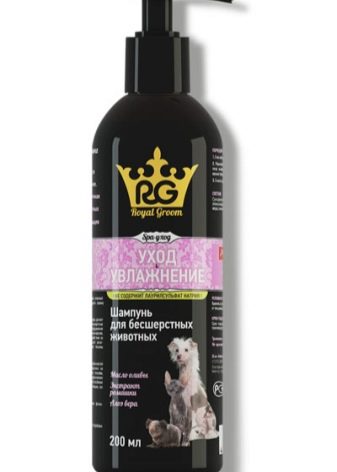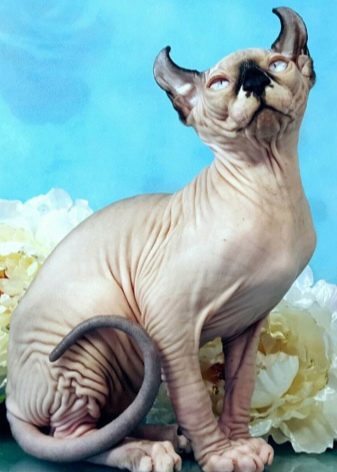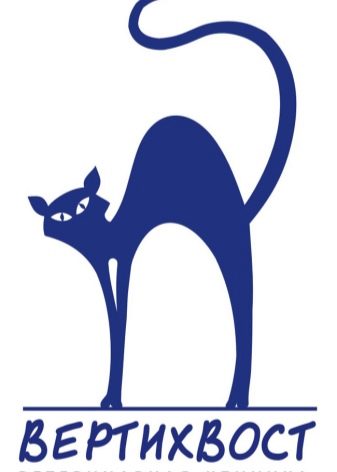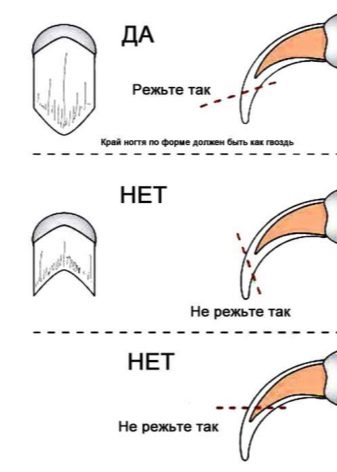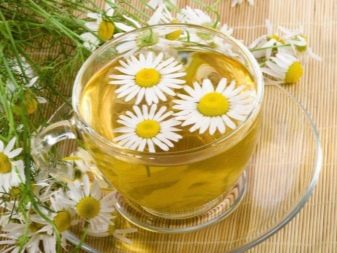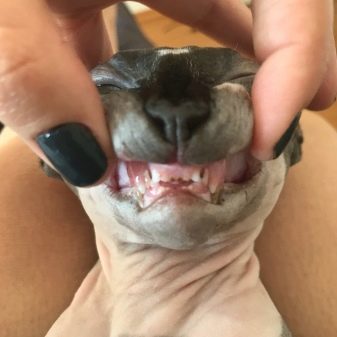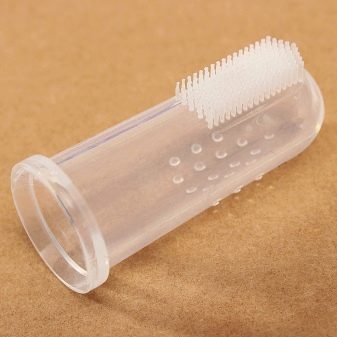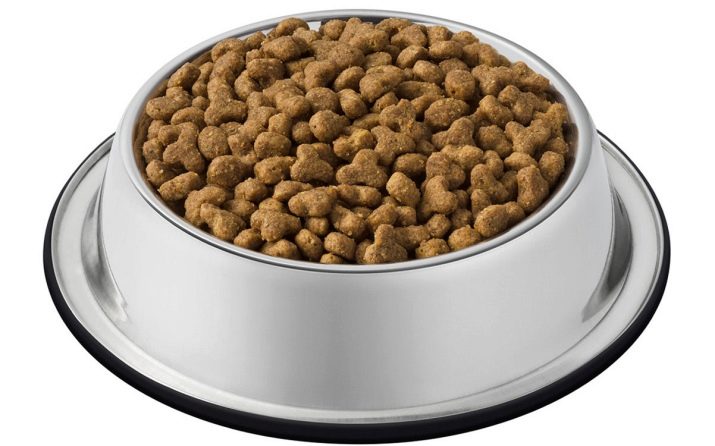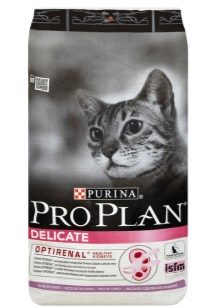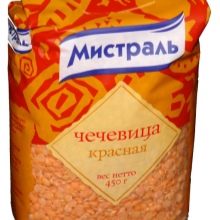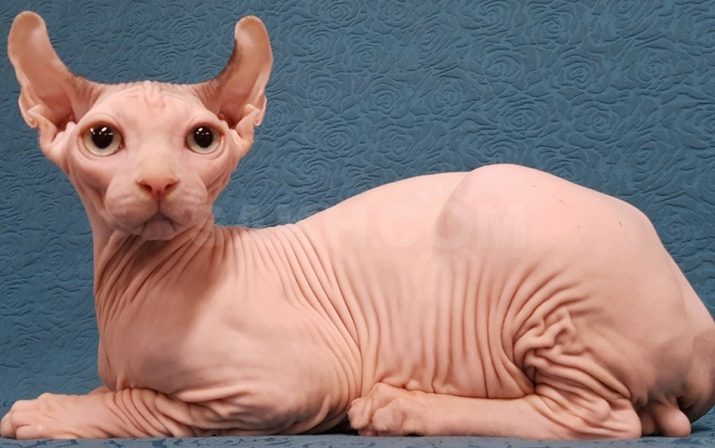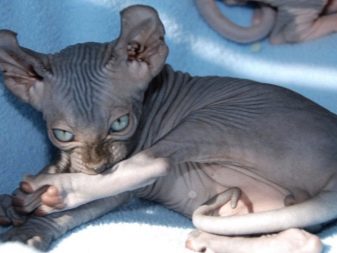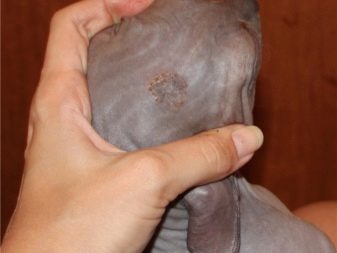Cats of the elf breed appeared quite recently, but have already won the love of a huge number of people. The peculiarities of the breed - lack of wool and charmingly folded ears at the tips - give it a special attraction for many breeders and amateurs. Description of the appearance of cats and kittens even sounds unusual, but in fact such a pet is quite comfortable in its content, and the rules of care and feeding are not any more difficult for him than for an ordinary pet.
History of origin
Elves owe their birth to a cat to two breeders from the United States. The basis for creating a new breed of cats were Canadian sphinxes. Thanks to them, the animals received a body without a coat, and an elegant build. But its second remarkable feature - ears curling out - kittens are obliged to American curls.
Such a combination of blood was not at all accidental. The fact is that one of the breeders began the selection after the death of the pet from a complex hereditary disease.
Sphinxes were initially not very resistant to the effects of infections and genetic diseases transmitted from generation to generation. And curls, on the contrary, are famous for longevity. The result of many years of hard work was the emergence in 2006 of a new breed. She was deprived of the traditional lack of hairless cats - poor health.
Elves are one of the youngest recognized breeds, they were recognized and included as experimental in 2007, and since then they have been quite successfully bred not only in the USA. Having received the best features from their ancestors - charmingly curved ears, like curls, and lack of wool - it attracts the attention of felinologists and just animal lovers. But there are also difficulties. Recognition of elf breed at the moment received only from one of the organizations, TICA, whereas in the world there are much more.
The number of nurseries and breeders is also small, which makes elves one of the five most expensive on the planet.
Description
The original appearance is exactly what its fans love for this breed. Elves have a strong muscular body, with a pronounced bulge of the abdomen (in form the body of the animal is close to pear). The thoracic region is round, rather wide. The length of the tail relative to the body is quite large, its tip has a pointed shape. The weight of an adult animal is up to 8 kg for males, up to 6 kg for females.
The limbs of elf cats are rather graceful, but muscular, supporting pads are rounded. Compared to sphinxes, it can be said that this breed has a more harmonious physique. The elbows of the front legs do not diverge to the sides, they are tightly pressed to the body, the legs themselves are longer than those of other hairless cats.
Elves are distinguished by a graceful line of the neck, it has a considerable length, an expressive bend. For the head is characterized by a wedge-shaped shape, the muzzle is sharpened to the chin. The breed is distinguished by a pronounced line of cheekbones, a straight, well-defined nose with a slight drop.
The ears of the animal have a slope of 90-180 degrees, with a stable part of the cartilage at a third of the length of the entire organ of hearing. The elves are distinguished by the pointed, curved back tips of the auricle. The ears themselves are large, have a broad base, in shape - pyramidal.
For elves is characterized by green, blue, yellow eyes. Their almond shape and expressiveness are especially attractive to owners.The eyeballs are slightly raised, the vibrissae and eyebrows are mild or absent.
For cats of this breed is characterized by such a phenomenon as a different eye color.
The skin of the animal is quite thick, almost naked, with a grain, similar to suede. The surface of the body is always warm. The folding characteristic of elves is most pronounced on the face, in the shoulder area. Short hairs are allowed outside the ear, on the nose (in the nose), on the tail and legs, genitals. As a rule, the presence of wool is manifested in kittens obtained in the first generation, when curls and sphinxes intersect directly.
The skin color of the elves is dull, usually light ashy, beige, white or black.
Contrast spots on any part of the body are acceptable.
Among the breed deficiencies described in the standard developed by breeders, the following can be noted:
- curvature and deformation of the tail;
- excessively narrow head, lack of a nick in the bridge of the nose;
- too low folding in the head;
- excessively massive or asthenic physique;
- copious amounts of wool in the area above the ankles;
- wrong landing of auricles;
- the ribbed or rounded edge of the ear, its excessive bending.
When identifying these deficiencies animals are not allowed to breeding.
Character traits
Elf cats are classic companion animals, with all their advantages and disadvantages. These pets are quite active, always affectionate with their owners, friendly. Elf is perfect for acquiring as a family pet - he will be patient with children and will always make a company during household chores. Cats love affection, go to their hands well and try not to leave the owners for a long time without their company. At night, an elf is most often seen exactly in the owner's bed, where he will feel completely happy.
The breed is characterized by curiosity, playfulness, and observation. Kittens quite actively mischievous, but with age, the behavior of the animal acquires a greater degree. Adult cats love height, trying to arrange a couch as high as possible from the floor surface. Calm elves have a propensity for demonstrative behavior in humans — with outsiders they can be capricious or arrange various antics, thus attracting the attention of their hosts to themselves.
Cats of this breed do not create problems in the process of teaching an animal to order. Elves are careful in eating and in the administration of natural needs. But if you show rudeness or cruelty towards the pet, he will definitely find a way to pay for the offenses. When kept together with other cats and dogs, representatives of the breed behave friendly, easy to make contact.
Having a companion makes their life easier, if the owner is a little home, and does not pay enough attention.
Conditions of detention
Choosing a kitten of the breed elf, or purchasing an adult animal, it is very important to provide him decent conditions of detention. A warm house or a bed - a prerequisite for creating a comfortable environment for a new pet. If you buy a basket for sleeping, you should choose a model with high sides, it is recommended to install it away from drafts. The temperature in the room itself should also be comfortable - not below +20 degrees Celsius.
True lovers of heat (this feature they inherited from sphinxes), elves are drawn to the sun and tend to sunbathe as they should. If the animal settled in a private house, you can arrange a "tanning bed" on a glazed veranda. In a city apartment, an ordinary window sill lacking flower pots and other dangerous objects will suffice. You can place a special mattress here - and the place for sunbathing for your pet will be ready for use.
Do not leave a heat-loving pet unattended when the electric fireplace or heater is on. In addition, in the hottest daytime windows, it is also better to provide for prudent curtains or blinds to prevent the cat from sunburning. If the animal spends a lot of time in the sun, pretty soon it will acquire a quite noticeable tan on the skin, which will go for several months.
To warm the baby elf or an adult cat, you can additionally use special clothing for animals. The breed adapts surprisingly easily to wearing comfortable wardrobe items, and feels completely at ease in them. As they grow older, cats can boast a very impressive wardrobe for all occasions.
Resolving walking issues is a rather painful moment for pet owners and breeders. In the case of cat elves, there is no need to talk about freedom of movement.
But to wear a pet's harness is better to teach them in advance, so he will feel calmer when traveling in the car, and also be able to walk on the grass in dry and warm weather.
Hygiene issues
Since elf cats do not have a coat, their body needs regular hygienic procedures that regular fluffy four-legs can easily cope with. In particular, regularity is very important in skin care. Every day, it is necessary to wipe it with a damp cloth, paying special attention to areas with folds - dust, dead particles and scales of the epidermis accumulate here. If you teach a cat to such care from a very young age, in the future it will be possible to avoid difficulties with the implementation of care as the pet grows up.
Elves are subjected to bathing about two times a month, while washing, the skin is soaked with a special agent with a washcloth or sponge, and then rinsed with warm clean water. It is extremely important to choose a shampoo that is suitable for representatives of the bare rocks. The composition of such funds contain substances that heal microcracks, eliminating skin irritation.
Another stage of care - cleaning the ears. It allows you to monitor the health of the animal, in a timely manner to eliminate all problems that arise. Large ears of elf cats need special attention. Weekly they are carefully treated inside with a special cotton swab lubricated with petroleum jelly or specialized lotion. It is better to subject the pet to the procedure with the support of the second person, since cats do not like to clean their ears, and there is a risk to injure the animal if you try to cope alone.
Cotton swabs is better to choose children or special for animals. Do not use self-made wiring harnesses and other home-made versions of the cleaning sticks. They can get stuck inside the ear.
If any signs of inflammation are detected, contact your veterinarian. The cause for alarm should be ulcers, the appearance of an unpleasant odor or discharge.
Black dots inside the ear also require medical attention.
Claw care
Another unpleasant, but necessary for the pet procedure - claw grooming. The excess cornified layer is cut with the help of wire cutters. The length of the tip to be removed should not exceed 2 mm; blood vessels may be located above. If they appear on the blood section, they should be thoroughly treated with an antiseptic solution.
If scratches have become a problem, you can use special tools - anti-scratches, which are silicone lining, put on claws and fixed with special glue. They do not allow the animal to injure itself or others, they allow to exclude damage to interior items by a cat not accustomed to a claw.
Eye hygiene
Elves with bulging eyeballs should have eye hygiene at the highest level. They are treated twice a day, in the mornings and evenings with a cotton pad dipped in lotion. Warm tea tea leaves or decoction of chamomile flowers are also suitable. The normal color of eye secretions is light. The appearance of brown marks or bloody, purulent drops is a reason to go to the vet.
Teeth care
Like every predator, the teeth of the representatives of the cat family are one of the most important indicators of health. They are regularly inspected and cleaned with the use of specialized products - veterinary paste, compact brush (suitable for infants - from silicone). If the animal receives little solid food, tartar may form on the enamel.
To prevent the development of inflammation of the gums, you should regularly carry out professional cleaning in the doctor's office.
Feeding
Consider the general principles of feeding. elves.
- The frequency of feeding for kittens should be up to 5 times a day. Adult animals do not eat more than 2-3 times a day.
- Portions should be small. Elves have a habit of eagerly absorbing food, neglecting its chewing, which further leads to problems with digestion. The owners should remember that a cat of this breed is asking for an additive, even if it is full.
- The standard volume of servings per day when feeding with natural food is 250 ml. And you can also calculate based on the weight of the animal - 40 g of food per 1 kg of body weight.
- With the introduction of new products in the diet should not be in a hurry.
At the slightest manifestation of allergy, feeding is stopped.
Ready feed
The simplest solution for providing elf cats with a full-fledged diet is to switch to dry ready-made food, pate and jelly in pouches. Among the options suitable for hairless animals are:
- Purina Pro Plan Delicate - diet superpremium based on meat of turkey, rice, corn, natural oils;
- ACANA Grasslands for Cats - holistic fodder based on duck meat, lamb liver, lamb, lentils;
- Royal Canin Sphynx Adult - takes into account the needs of breeds of cats, deprived of wool, but can cause allergies.
Natural feeding
Making up a natural diet for an elf cat, you should focus on your pet's preferences and recommendations of veterinarians. As part of the feed should be at least 60% of the protein components of animal origin. These include lean meat - chicken, turkey, veal and beef, low-fat cottage cheese and kefir. About 10% of the diet is fat and 30% carbohydrates.
Vegetables in the diet should be zucchini, carrots, cauliflower, be sure to add cereals - from lentils to rice and oatmeal. Replenish the supply of fiber will help and a special pot with cat grass. With it, the pet will receive fresh vitamins.
All smoked, salted, sweet and fatty foods should be removed from the diet of an elf cat. It is not recommended to give pork, beans.
Picking up a balanced diet for the elves can provide them with a full supply of energy and prevent the development of obesity dangerous for animals.
Health
Potential owners of elf cats often display quite reasonable concerns about the possible manifestation of genetic diseases characteristic of all breeding breeds. But at the moment there is no information about the presence of such problems. Moreover, it is safe to say that with proper care, elves may well live up to 15-18 years.
Representatives of the new breed have all the chances to become long-livers.
However, absolutely no health problems is complete. Like other hairless breeds, elves are skin sensitive to the effects of various stimuli. Dermatitis, rashes, peeling - this is only a small part of what animal owners face. Consider the causes of skin problems that are most common in elf cats.
- Hormonal imbalance. In animals, it appears quite brightly and can cause acne.
- Food allergies. If the food does not fit the pet, he accidentally tried the forbidden delicacy, you can most likely wait for the rash. Often, allergy is manifested in seafood.
- Poor hygiene. Cat skin needs regular cleansing. With increased separation of fat or dry derma hygiene will have to pay special attention.
- Long stay in the sun. Sunburns for cats are a serious danger, can cause redness and peeling of the skin.
- In young cats, cat-manufacturers there may be intense periods of increased hormonal levels, occurring with almost the same symptoms as puberty in humans. Rash on the skin and increased separation of fat - a consequence of these problems.
- Wrong selection of food. In elves, it leads to the fact that a brown patina forms on the surface of the skin. When it appears, it is worth consulting with a veterinarian about possible changes in nutrition.
We should not forget that the lack of hair coat leads to increased susceptibility of cats to colds. Significant temperature changes, drafts, long stay in the cold to elves are contraindicated.
More about Elf cats - in the next video.
